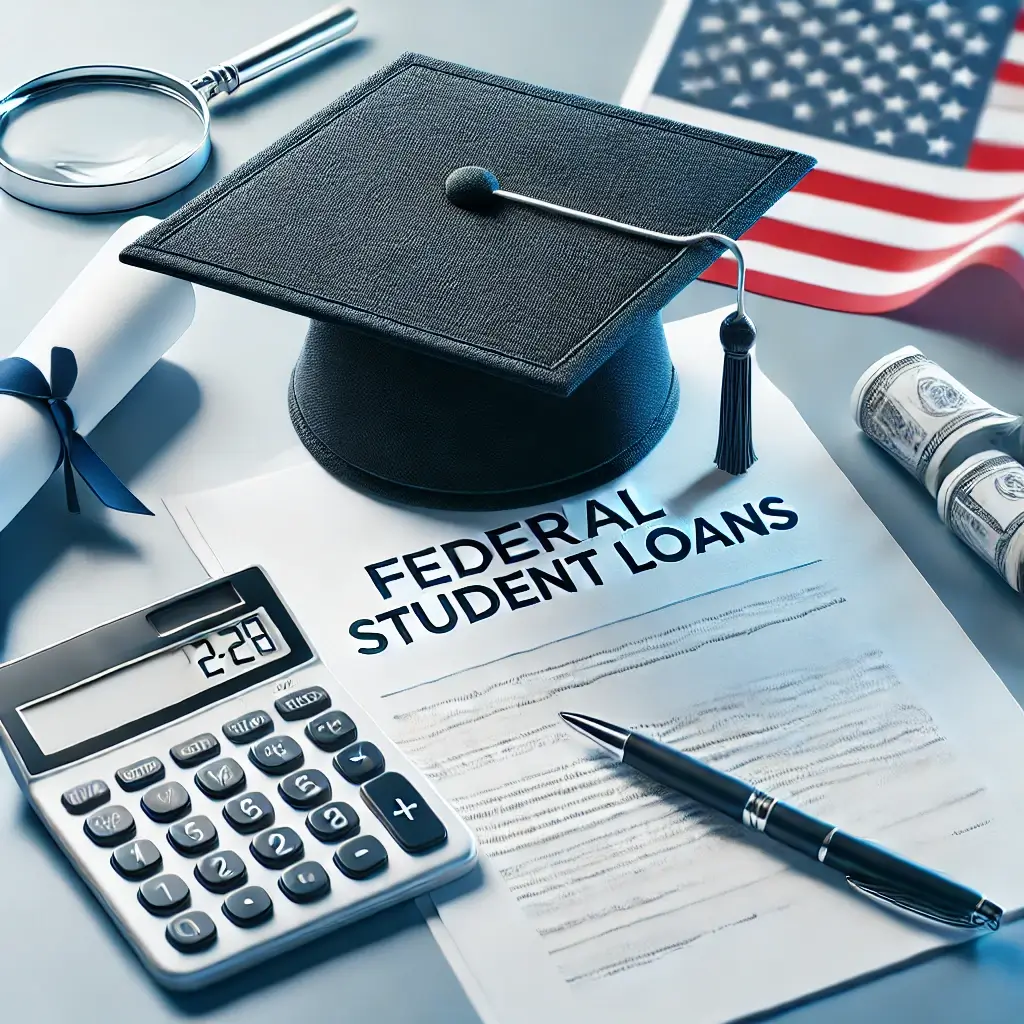When it comes to financing your education, the Best Federal Student Loans can make a huge difference. These loans offer low interest rates, and flexible repayment options, and are designed to make college more affordable. This guide explores the Best Federal Student Loans, how they work, and how to choose the right one for your needs.
1. Types of Federal Student Loans That Benefit You Most
Federal student loans come in several types, each with unique benefits that make them ideal for different situations. Here’s a detailed look at the Best Federal Student Loans available:
1.1 Direct Subsidized Loans – The Smart Choice for Undergraduates
- Who Qualifies: These loans are exclusively for undergraduate students with demonstrated financial need.
- Why They’re Best: The government pays the interest while you’re in school, during deferment, and throughout grace periods.
- Annual Loan Limit: $3,500 to $5,500, depending on the year of study.
Direct Subsidized Loans are the Best Federal Student Loans for students needing affordable, low-cost borrowing options. If you qualify, you’ll save a significant amount on interest payments.
1.2 Direct Unsubsidized Loans – Great Flexibility for All Students
- Who Qualifies: Available to both undergraduate and graduate students, no financial need is required.
- Interest: Starts accruing immediately, and borrowers are responsible for all interest costs.
- Annual Loan Limit: $5,500 to $20,500, depending on academic level and dependency status.
Since eligibility is not based on financial need, Direct Unsubsidized Loans are among the Best Federal Student Loans for students needing to bridge funding gaps without income restrictions.
1.3 Direct PLUS Loans – Covering Full Cost of Attendance for Parents and Graduates
- Who Qualifies: Parents of dependent undergraduates, graduate, and professional students.
- Interest: Accrues immediately, and a credit check is required.
- Loan Limit: Up to the full cost of attendance minus other financial aid.
Direct PLUS Loans offer a way to cover the entire cost of education, making them a top choice in our list of the Best Federal Student Loans.
1.4 Direct Consolidation Loans – Simplifying Repayment for Borrowers
- Purpose: Combine multiple federal student loans into one, with a single payment.
- Interest Rate: Fixed, based on the average of your current rates, rounded up to the nearest 1/8%.
Consolidation loans don’t offer new funding but provide a practical repayment solution, placing them among the Best Federal Student Loans for managing multiple balances.
2. Why Federal Student Loans Are the Best Choice
Federal student loans come with major benefits that set them apart from private loans. Here’s why the Best Federal Student Loans make financial sense:
2.1 Lower Fixed Interest Rates
Compared to private loans, federal loans offer lower, fixed interest rates. This stability helps with financial planning and prevents interest spikes that can come with variable-rate private loans.
2.2 Flexible Repayment Options Tailored to Your Needs
With the Best Federal Student Loans, you get access to flexible repayment plans:
- Standard Repayment Plan: Fixed payments over 10 years.
- Graduated Repayment Plan: Payments start low and increase every two years.
- Income-Driven Repayment Plans: Payments based on income and family size.
These options make federal student loans adaptable to your changing financial circumstances.
2.3 Deferment and Forbearance Options for Uncertain Times
Life is unpredictable, but the Best Federal Student Loans allow you to pause payments in times of hardship, military service, or when you return to school.
2.4 Loan Forgiveness Programs to Reduce Your Debt
Federal student loans offer access to forgiveness programs such as:
- Public Service Loan Forgiveness (PSLF): For those who work in public service jobs.
- Teacher Loan Forgiveness: Available to teachers working in qualifying low-income schools.
These programs can drastically reduce the amount you owe, making federal loans the Best Federal Student Loans for students pursuing public service careers.

3. How to Choose the Best Federal Student Loans for Your Goals
Choosing the Best Federal Student Loans depends on several factors. Here’s how to evaluate which type suits you best:
3.1 Consider Your Financial Need
If you qualify for need-based aid, Direct Subsidized Loans are the Best Federal Student Loans as they reduce the overall cost with government-paid interest benefits.
3.2 Determine Your Academic Level
For undergraduates, both Subsidized and Unsubsidized Loans are available. Graduate students, however, have access to Direct PLUS Loans and Unsubsidized Loans, making them versatile choices.
3.3 Assess Any Funding Gaps
If federal loans don’t cover your full cost of attendance, Direct PLUS Loans allow you to borrow up to the total cost of attendance.
4. Step-by-Step Guide to Applying for the Best Federal Student Loans
Getting started with the Best Federal Student Loans is simple:
4.1 Complete the FAFSA
The Free Application for Federal Student Aid (FAFSA) is your first step. Visit the official FAFSA website, fill out the form, and submit it. This form determines your eligibility for the Best Federal Student Loans.
4.2 Review Your Financial Aid Offer
Once processed, your school will provide a financial aid offer outlining the types and amounts of loans you’re eligible for. Evaluate this carefully to determine which federal loans best meet your needs.
4.3 Accept Your Loan Offer Wisely
Only accept what you need. The Best Federal Student Loans are low-cost, but remember that they still need to be repaid, so take only what covers your essential educational expenses.
5. Federal Student Loan Repayment Plans: Making the Best Choice
Federal student loans offer multiple repayment options designed to help you manage debt after graduation. Here’s an overview of the best plans:
| Repayment Plan | Duration | Eligibility | Best For |
|---|---|---|---|
| Standard Repayment | 10 years | All borrowers | Those seeking fixed payments and faster payoff. |
| Graduated Repayment | 10 years | All borrowers | Borrowers expecting increased earnings over time. |
| Income-Driven Plans | 20-25 years | Based on income | Graduates in lower-paying careers or those needing low monthly payments. |
Selecting the right plan helps you maximize the benefits of the Best Federal Student Loans and reduces financial stress.
Conclusion
Federal student loans remain some of the Best Federal Student Loans options for students seeking affordable, flexible funding. With low interest rates, adaptable repayment options, and loan forgiveness programs, federal loans offer unbeatable value. Understanding the different types, benefits, and application process ensures that you make informed choices to fund your education. Embrace the Best Federal Student Loans today to invest in your future and achieve your educational goals without undue financial burden.
